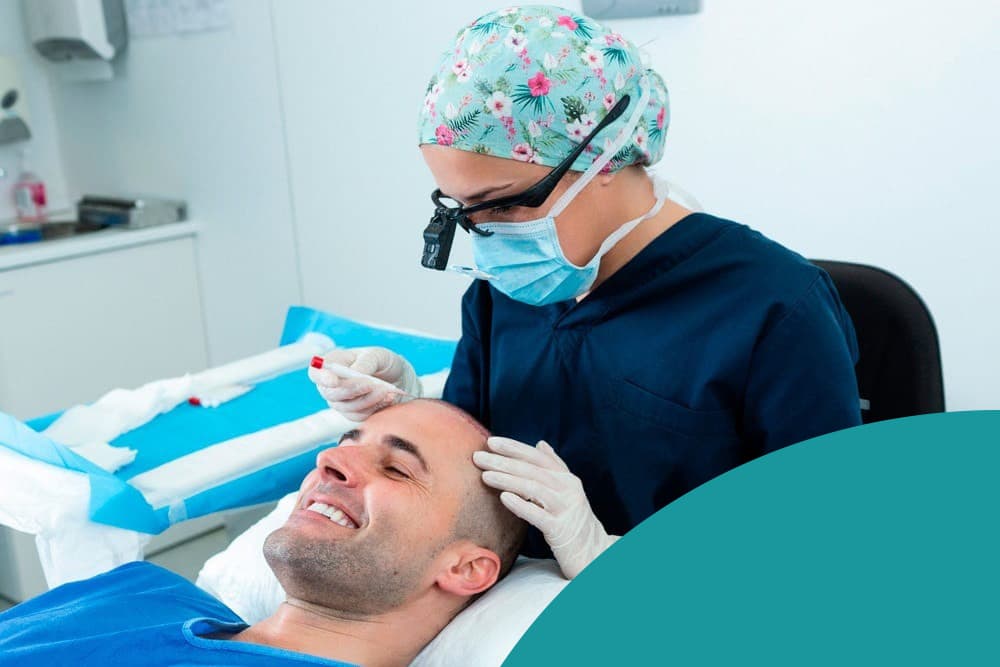Get a better understanding of hair loss
Natural hair loss
Why does hair fall?
As you know, the cyclical loss of hair is natural. Every day, people lose, on average, 100 strands of hair.
To better understand this loss, we should first know the life cycle and the constitution of the hair. The hair is made up of two important parts, the strand of hair, the most visible, and the follicle (root) which can be found inside the skin. Each follicle can have one or more strands of hair.
The hair that grows in the capillary follicle, grows during its longest life phase (Anagen phase), goes through another short phase of growth stagnation (Catagen phase), and subsequently entering in the last phase designated as the resting and falling phase (Telogen phase), giving place to a new strand of hair. It is important for us to understand that each capillary follicle has its own life, meaning that, each cycle of hair is individual and non-synchronized.
When we are young our scalp is filled with over 100 000 strands of hair. Each strand, from the point that it starts to grow to the point when it falls, goes throw 3 phases. When this cycle ends, a new one starts and our body regenerates a new strand in the same place. The duration of this cycle is variable from person to person.
The life cycle of hair
Anagen
The majority of our hair finds itself in this phase (around 85%). This is the first place, therefore, it is when our hair is formed and grows, around 1 centimeter per month. This is a process that can take between 2 and 5 years. As the years go by, this phase gets shorter which results in thinner and more sparse hair.
Catagen
After the formation and growth phase of the hair, the strands stop growing. Despite them still being connected to the capillary follicle, the hair goes up toward the epiderm. This is a period of transition that goes on for approximately 2 to 3 weeks. Around 3% of our hair finds itself in this phase.
Telogen
This phase is also known as the resting phase of the hair. Its duration is in between 6 and 7 months. The capillary follicle shrinks and the hair detaches itself. This same follicle starts to produce a new strand of hair and the one that was there previously ends up falling. This cycle repeats itself until the capillary follicle reaches exhaustion (around 25 times). This phase affects around 12% of the hair.
When should I be worried about hair loss?
The first signs to have in mind are:
- When you notice an excessive loss of hair (greater than 100 strands per day);
- When you notice that your hair is getting thinner (weaker);
- When you notice that your hair is getting less dense.
Reasons for excessive hair loss
There are a number of factors that can shorten the life cycle of your hair, consequently, increase the number of strands that fall daily, and lead to a faster exhaustion of the capillary follicle. The most common causes are:
- Hereditary factors;
- Immunitary diseases;
- Hormonal imbalance;
- Stress/psychological disturbance;
- Malnutrition;
- Bacterial infection.
There are two more types of hair loss, clinically designated by Alopecia: Temporary/occasional and definitive.
The occasional hair loss spans for a short period of time, or as long as the factor that causes hair loss is maintained, with the most common being stress, malnutrition, fungal infections, and small hormonal imbalances. On the other hand, the definitive and the hard reversal loss have origins in more complex factors associated with the disease, such as androgenetic inheritance, and imbalance in the hormonal and immune system.
What are the most common types of Alopecia?
- Androgenetic Alopecia;
- Diffuse Alopecia;
- Alopecia Areata;
- Frontal Fibrosal Alopecia;
- Traction Alopecia.
What are the possible solutions and treatments for excessive hair loss?
If you notice or have doubts that you are having eminent hair loss or even problems of other nature, such as itching, gaps, a considerable decrease in strands of hair, nodes, spontaneous scars, pimples, flaking, excessive dandruff, and many others, you should book a capillary appointment
immediately.
At Attica Clinic you will find a team specialized in the capillary area and one that will perform an evaluation to identify your situation in concrete and if needed will indicate to you the best solution of treatment possible.
Related to Androgenetic Alopecia (the most common problem), Attica Clinic has the best treatment solutions, in a preventive or definitive character.
Take the first step and book your Evaluation Appointment, free and without compromise
Delay the effects of Androgenetic Alopecia
When we suffer from Androgenetic Alopecia or from Traction Alopecia, the life cycle of our hair decreases much faster and we start to notice that our hair is getting thinner and sparse as time passes.
At Attica Clinic we offer our patients personalized treatments, such as capillary mesotherapy, PRP (Platelet-rich Plasm) that help strengthen the hair and increase its life span.
The definitive solution!
While the preventive solutions are adequate to help revert/delay the weakening of the hair, the hair transplant emerges as the only natural solution to recuperate the bald areas provoked by the definitive loss of hair.
At Attica Clinic you will find the hair transplant that guarantees the best recuperation and results of the modern day. To learn more about, visit our page about hair transplant.

